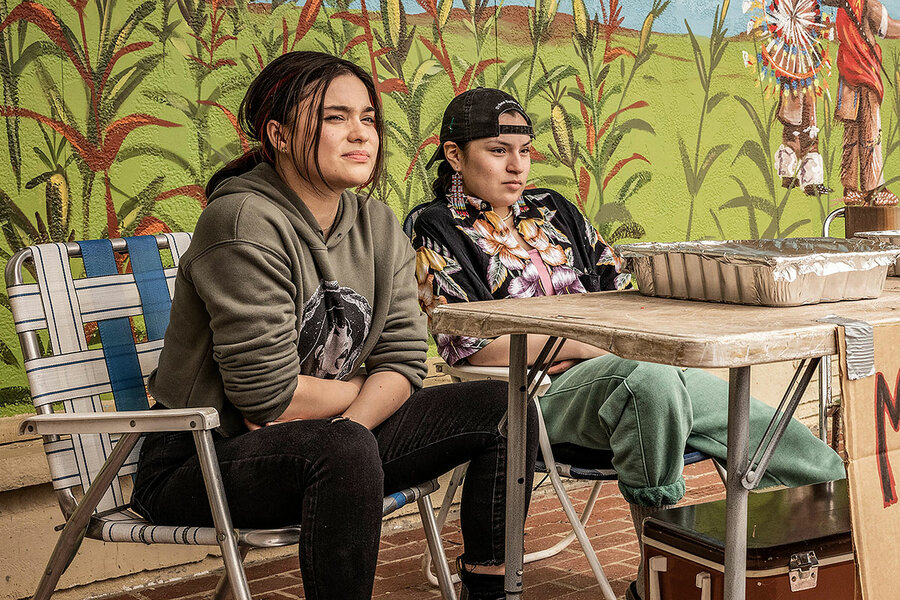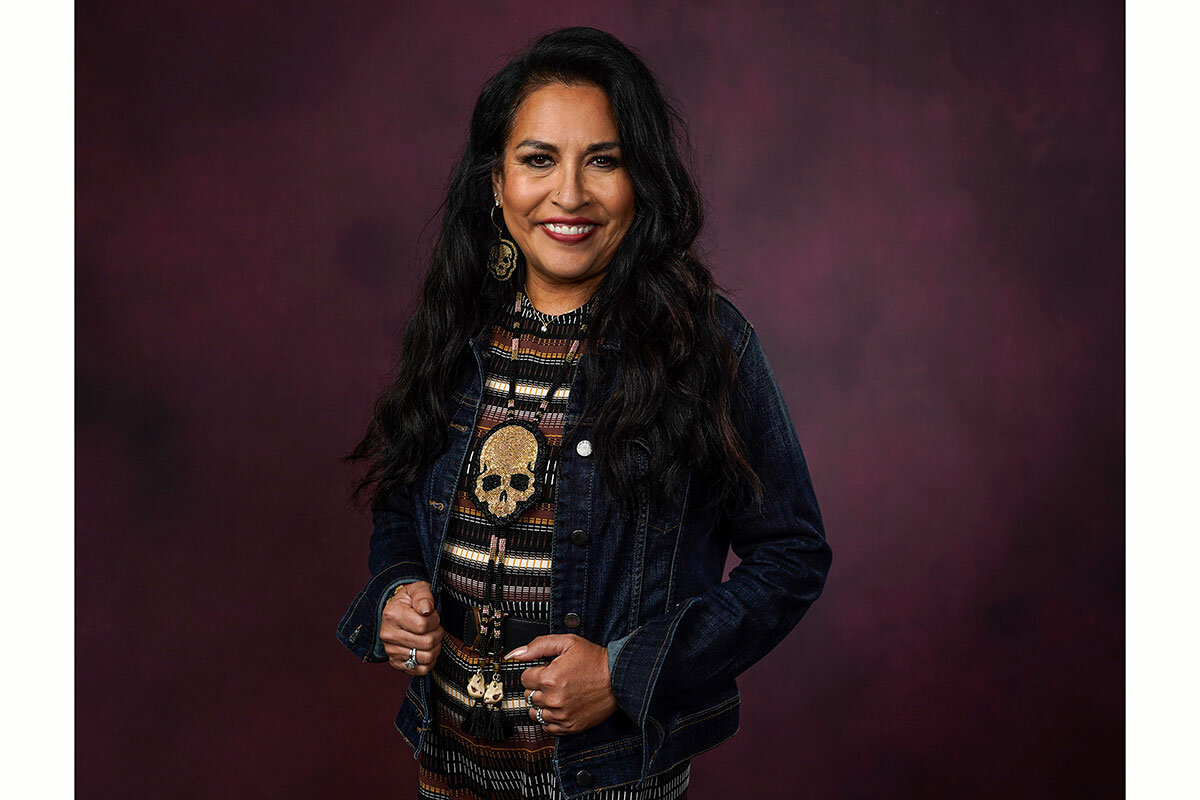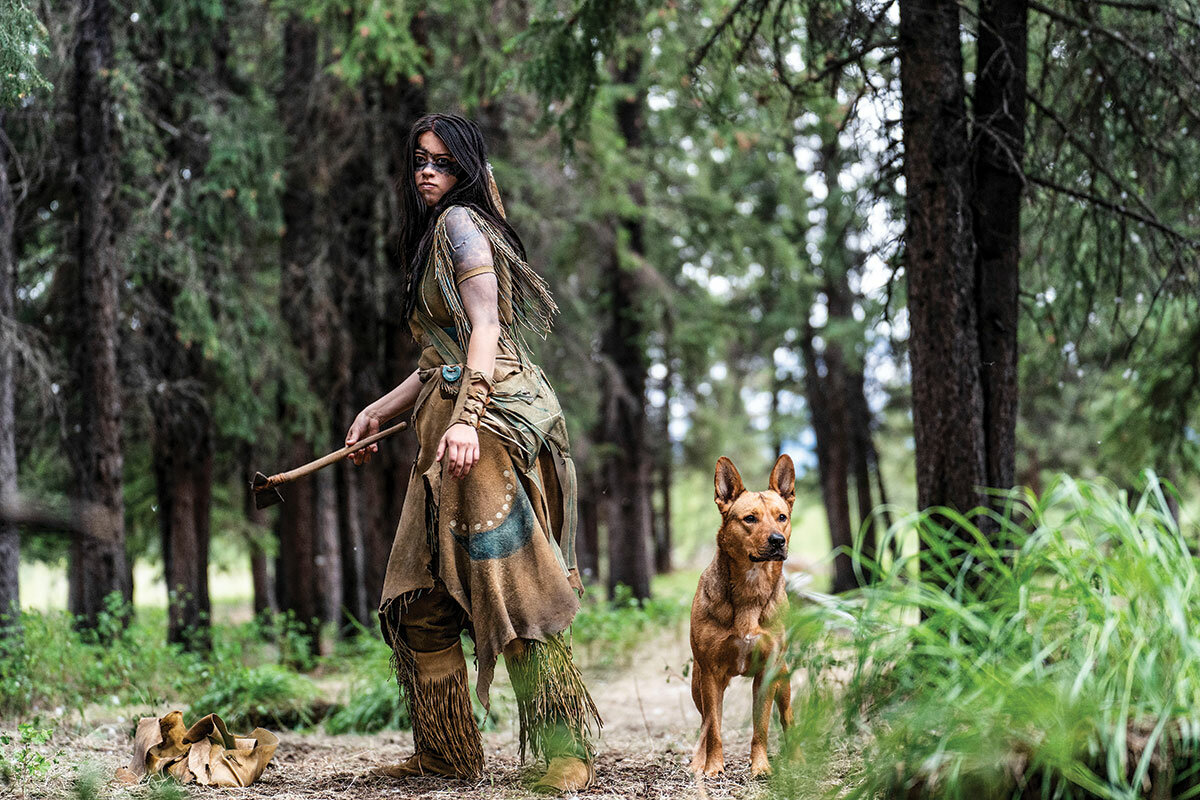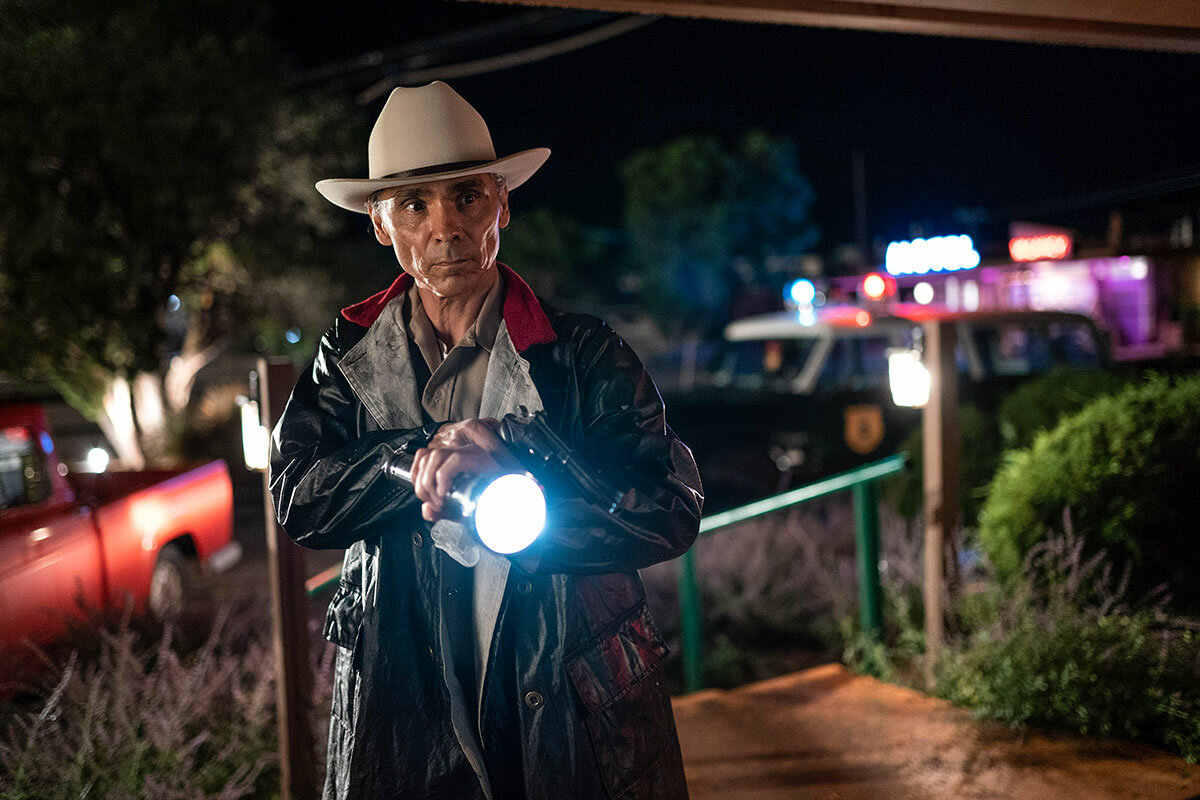From ‘Reservation Dogs’ to ‘Prey,’ Native people expand their portrayal
Loading...
As the entertainment industry seeks to portray a more diverse swath of American life, one place it is making some progress is in programming that features Indigenous culture.
Spanning genres and time periods – from a sci-fi/horror action flick set on the 18th century Great Plains (“Prey”), to a noir crime thriller series on AMC set in the 1970s Southwest (“Dark Winds,” based on the books by Tony Hillerman), to a teen comedy drama that takes place in contemporary rural Oklahoma (“Reservation Dogs”) – the content is setting new standards for authenticity and representation of Native people.
Why We Wrote This
Indigenous creatives say a shift is underway in Hollywood, one that gives them an opportunity to shed the sidekick or villain image for more modern and well-rounded representations. With that progress comes a fuller picture of American life.
This progress hasn’t happened overnight, Native artists say, and more is still needed. But beyond moving past old stereotypes, the shift is bringing a new sense of empowerment to Native audiences.
For decades “the only space [Native] people had was to be extras in movies, or to be [consultants] correcting mistakes on technical issues,” says Paul Chaat Smith, a Comanche author and essayist, and curator at the Smithsonian’s National Museum of the American Indian in Washington, D.C.
“What’s new is … you have Native people in [leading] positions,” he adds. “That’s a shift people have been waiting for for a long time.”
In her debut appearance on a late-night talk show earlier this month, “Reservation Dogs” star Paulina Alexis shared that she and her co-stars are basically portraying themselves on the hit comedy show. “They wanted rez kids, they got rez kids,” she told host Jimmy Fallon.
The reason she says people are “falling in love” with the series, which began its second season Aug. 3 on Hulu, is because it provides a window into her culture that most of America hasn’t seen. “We’re really funny people. It just hasn’t been shown before,” says Ms. Alexis, a member of the Alexis Nakota Sioux Nation.
As the entertainment industry seeks to portray a more diverse swath of American life, recent programs are evidence of how Native representation in particular is progressing. Spanning genres and time periods – from a sci-fi/horror action flick set on the 18th century Great Plains (“Prey,” also on Hulu), to a noir crime thriller series on AMC set in the 1970s Southwest (“Dark Winds,” based on the books by Tony Hillerman), to a teen comedy drama that takes place in contemporary rural Oklahoma (“Reservation Dogs”) – the content is setting new standards for authenticity and representation of Native people.
Why We Wrote This
Indigenous creatives say a shift is underway in Hollywood, one that gives them an opportunity to shed the sidekick or villain image for more modern and well-rounded representations. With that progress comes a fuller picture of American life.
This progress hasn’t happened overnight, Native artists say, and more is still needed. But beyond moving past old stereotypes, the shift is bringing a new sense of empowerment to Native audiences.
For decades “the only space [Native] people had was to be extras in movies, or to be [consultants] correcting mistakes on technical issues,” says Paul Chaat Smith, a Comanche author and essayist, and curator at the Smithsonian’s National Museum of the American Indian in Washington, D.C.
“What’s new is … you have Native people in [leading] positions,” he adds. “That’s a shift people have been waiting for for a long time.”
A film in Comanche
Jhane Myers has been working in the film industry for nearly two decades. But walking through the set of “Prey” in Canada last year – past the teepees and campfires of an authentic early 1700s Comanche hunting camp – she felt something she’d never felt before.
“My ancestors probably had a camp exactly like that,” says Ms. Myers, a producer on the film who is from the Comanche and Blackfeet Nations.
“It [was] a beautiful step back, really beautiful,” she adds. “Rarely do you get to do that in film.”
The film is rare in several ways. It’s a period film inside a sci-fi/horror film. It’s part of the long-running “Predator” franchise, but set centuries before the original. The cast is made up almost entirely of First Nation or Native American actors – including Amber Midthunder, an enrolled member of the Fort Peck Assiniboine and Sioux Tribes, as the hero, Naru. It’s also the first film to be dubbed in Comanche.
In the dubbed version, the Comanche title for the film is “Kühtaamia,” which translates to a big hunt or trial. It references a real rite of passage for Comanche warriors of the time, relating to hunting something that is hunting you, and it’s a central feature of the film’s plot. Naru yearns, early in the film, to go out for her kühtaamia – and it becomes a more dangerous hunt than she could have possibly imagined.
On Aug. 9 Disney announced that the film, released Aug. 5, had set a new streaming record on Hulu. For Ms. Myers, the producer, the ultimate highlight was when she screened “Prey” in the Comanche Nation. As the film concluded, the audience erupted in Comanche war cries – the same cries heard in the film’s closing scene. “That’s better than a pat on the back,” she says.
“Often we’re seen as the villains, or we’re seen as downtrodden, [or] we’re seen as the sidekick,” she adds. “To see us in this type of position, but to know that my people see it and are empowered from it, that’s amazing.”
Feeling empowered
Empowerment is a recurring theme for the Native people involved in these shows and films.
In a behind-the-scenes video about Season 1 of “Reservation Dogs,” Tazbah Chavez – a producer, writer, and director on the comedy – describes how the only programming she could identify with growing up featured Black characters.
“If I was a kid and I saw [“Reservation Dogs”], that would have exponentially made me more confident in who I am, made me more proud of who I am, and just I think feel more understood in the greater fabric that’s America,” Ms. Chavez, a citizen of the Bishop Paiute Tribe, adds.
The new shows are offering more work for those who are both in front of and behind the camera. “This industry was built on people giving each other opportunities. ... Now we have Native showrunners, and we get to give Native people opportunities,” says Sterlin Harjo, a “Reservation Dogs” director and writer, in the video. Mr. Harjo, a Seminole and Muscogee (Creek) filmmaker, and Taika Waititi, a New Zealand filmmaker of Maori descent, are co-creators of the show, which won a Peabody Award in June.
Some of the same cast members are featured across the new programming. Veteran Lakota actor Zahn McClarnon plays a tribal police officer in “Reservation Dogs,” and is also Navajo police officer Joe Leaphorn in “Dark Winds,” which debuted in June. Devery Jacobs, a member of the Kanien’kehá:ka Mohawk Nation, is one of the titular “Reservation Dogs” and she also plays a minor role in the Peacock comedy “Rutherford Falls,” another recent outlet for Native writers and actors.
Even with all the opportunities, there is still room for progress. The Hollywood Diversity Report – conducted every year by the University of California, Los Angeles – found that in 2021, the most recent year for which data is available, fewer than 1% of acting roles in the most-watched films were filled by Native Americans. Fewer than 1% of the writers and directors in those films were Native.
“While overall diversity and representation has increased [in entertainment], Native diversity and representation has not,” says Leah Salgado, a citizen of the Pascua Yaqui Tribe and chief impact officer at IllumiNative, a nonprofit focused on amplifying contemporary Native voices and stories.
Like Ms. Myers, the producer, Ms. Salgado adds that she would like to see more Native actors in content that isn’t Native-focused. They want to see a dentist who just happens to be Native, or a best friend in a romantic comedy who just happens to be Native.
That said, the recent Native-focused content has been heartening for Ms. Salgado. She notes, for instance, that Naru’s role in “Prey” highlights the importance of female warriors “and the example they set for our young ones.”
She also appreciates how the new shows allow her to see “my family and my community reflected on the screen.”
“We can be badass action heroes, we can be funny museum curators, we can be teased by our uncles,” she continues. “We can have that now in a way we haven’t had at all, ever, in the history of film and television.”
“Prey” is rated R, and both of the series “Dark Winds” and “Reservation Dogs” are rated TV-MA, for mature audiences.











